Nestled in the heart of Hanoi’s vibrant Old Quarter, St. Joseph’s Cathedral stands as a monumental relic of French colonial architecture and a bastion of faith for the local Catholic community. This iconic structure, with its towering spires and ornate design, draws countless visitors who marvel at its beauty and historical significance. As you wander through its historic halls, you’re transported to a bygone era, when the cathedral was not just a place of worship but also a symbol of cultural fusion between Eastern and Western traditions. With every stained-glass window and intricately carved arch, St. Joseph’s Cathedral tells a story of resilience and unity that resonates with both locals and tourists alike.
Watch the video summarizing the article “St. Joseph Cathedral in Hanoi: A Gothic Landmark of Faith and Culture”
Historical Significance of St. Joseph Cathedral
St. Joseph’s Cathedral, a masterpiece of Gothic Revival architecture, is not merely a religious edifice but a historical canvas reflecting the ebbs and flows of Vietnam’s multifaceted past. Established in 1886 during the French colonial era, it embodies the blend of Western influences with Vietnamese culture. This cathedral stands as a poignant reminder of Hanoi’s transformation through adversities and triumphs. It experienced closures during political upheavals and played host to countless community gatherings and major religious ceremonies, becoming a cornerstone of cultural and spiritual resilience amid an ever-evolving urban landscape.
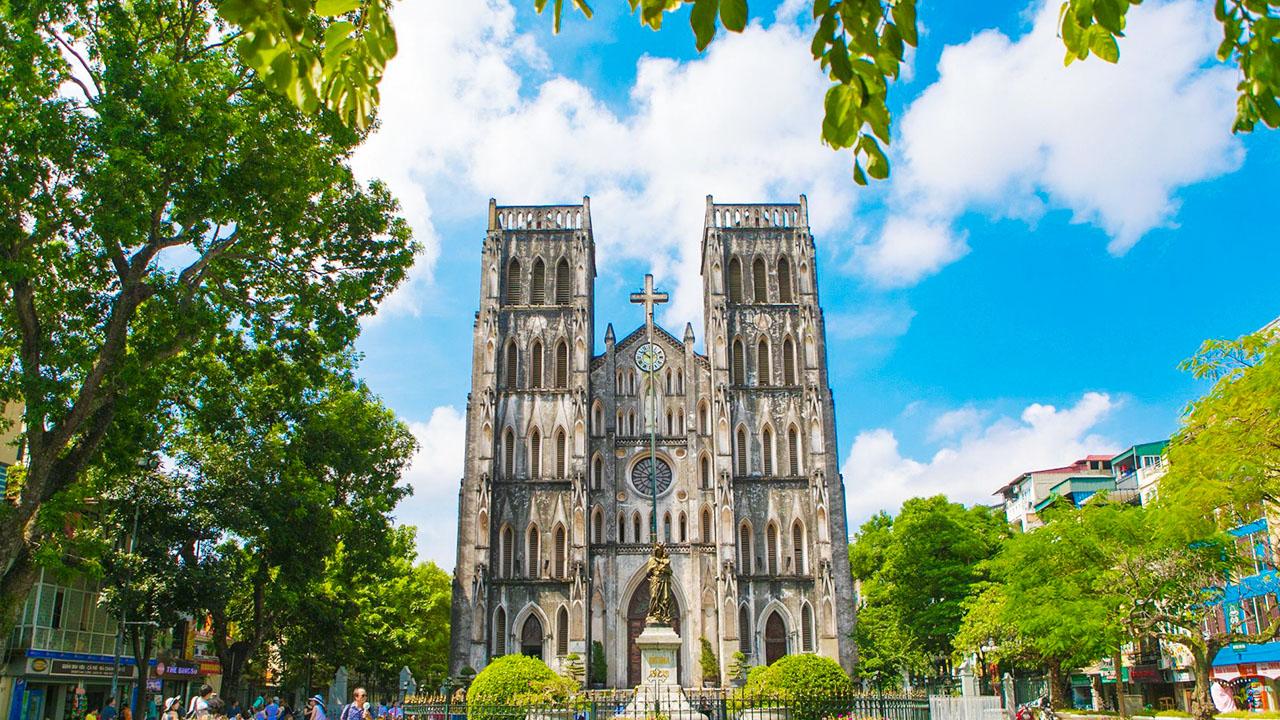
Founding Year and Architectural Style
Founded in 1886 and completed two years later, St. Joseph’s Cathedral was established as a significant architectural and cultural landmark in Hanoi, unveiled amidst the French colonial influences. The cathedral’s architectural narrative is one of elegance and robustness, characterized by its Neo-Gothic design, which sets it apart from other religious structures in Vietnam. The comparison to the Notre Dame Cathedral in Paris is apt, not just due to stylistic similarities, but also due to the historical timelines that weave a story of two cultures coming together.
Its design features include:
- Twin towers standing at 31.5 meters, serving as iconic silhouettes against Hanoi’s sky.
- Elaborate stone carvings that lend an ethereal beauty.
- A facade dominated by tall pointed arches that evoke a sense of vertical infinity.
The cathedral’s new Gothic styling is a blend of grandeur and intricacy, with ribbed vaults and sharply defined elements typical of Western European churches. Each structural component, from the spires to the elaborate stonework, underscores not only the architectural mastery of the time but also the ideological imprints of a colonial era that saw the merging of cultures.

Influence of French Colonialism on the Cathedral’s Design
French colonialism notably influenced the architectural ethos of St. Joseph’s Cathedral, marking it as a testament to the era’s Western architectural pursuits transplanted into Asian contexts. The French aimed to imprint a piece of European identity within the diverse traditions of Vietnam, as exemplified by the cathedral’s structure.
- French Elements:
- Triangular-arched doorways and windows reminiscent of medieval European designs.
- Extensive use of stained glass, producing kaleidoscopic light patterns that breathe life into evening masses.
- Cultural Synthesis:
- Incorporation of local materials such as baked bricks, which were quintessential to traditional Vietnamese construction styles.
- Altars and interior woodwork displaying artisanal Vietnamese craftsmanship, harmonizing with the dominant French influences.
This architectural amalgamation was not mere aesthetic indulgence; it stood as a cultural dialogue of reconciliation and adaptation, enabling the cathedral to serve as a bridge between disparate cultural and spiritual legacies.
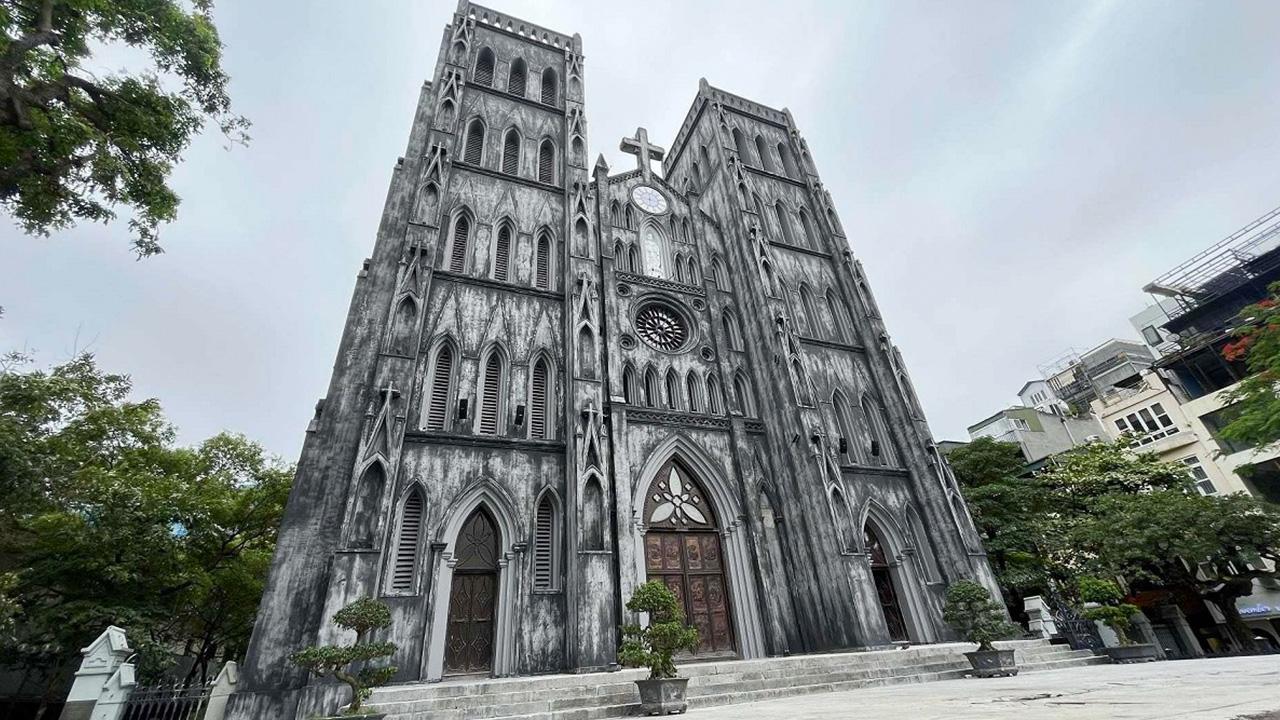
Key Historical Events Associated with St. Joseph Cathedral
Through the tapestry of Vietnam’s history, St. Joseph’s Cathedral has been a silent witness to significant events that echo within its walls. The cathedral’s history is entrenched with moments both somber and celebratory, imprinted by the socio-political shifts of the 20th century.
- During the Vietnam War, its roles expanded from a spiritual haven to a place of refuge for many Vietnamese, including revolutionaries during intense times of conflict.
- Post-war, especially during the socialist regime, the cathedral’s doors were shut, marking an era of religious suppression. However, its reopening in 1990 signified a renaissance of faith and community rejuvenation.
- The cathedral serves as a focal venue for state and religious ceremonies, such as Christmas and Easter masses, accommodating myriad participants and forging Hanoi’s identity as a hub for cultural convergence.
These historical benchmarks not only reinforce its pivotal role in Hanoi’s religious and communal life but also highlight its enduring presence amidst trials of governance and autonomy.
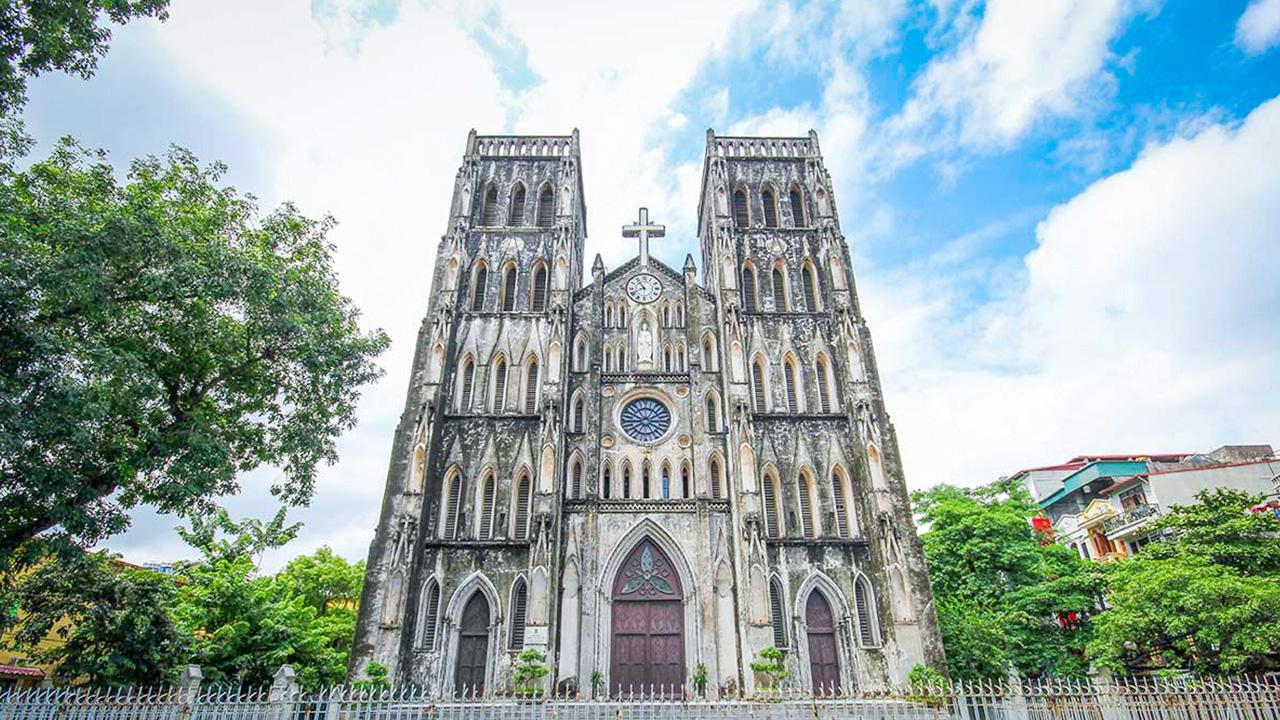
Architectural Features of St. Joseph Cathedral
The architectural brilliance of St. Joseph’s Cathedral is a testament to its historical gravitas, marked by an intricate blend of Neo-Gothic artistry and local Vietnamese influences. Its elegant facades and dynamic interior design reflect a sophisticated synthesis of old-world charm and cultural heritage. As a towering symbol of Hanoi’s architectural tapestry, the cathedral’s prominent features continue to draw admirers, both for its spiritual resonance and its cultural allure.
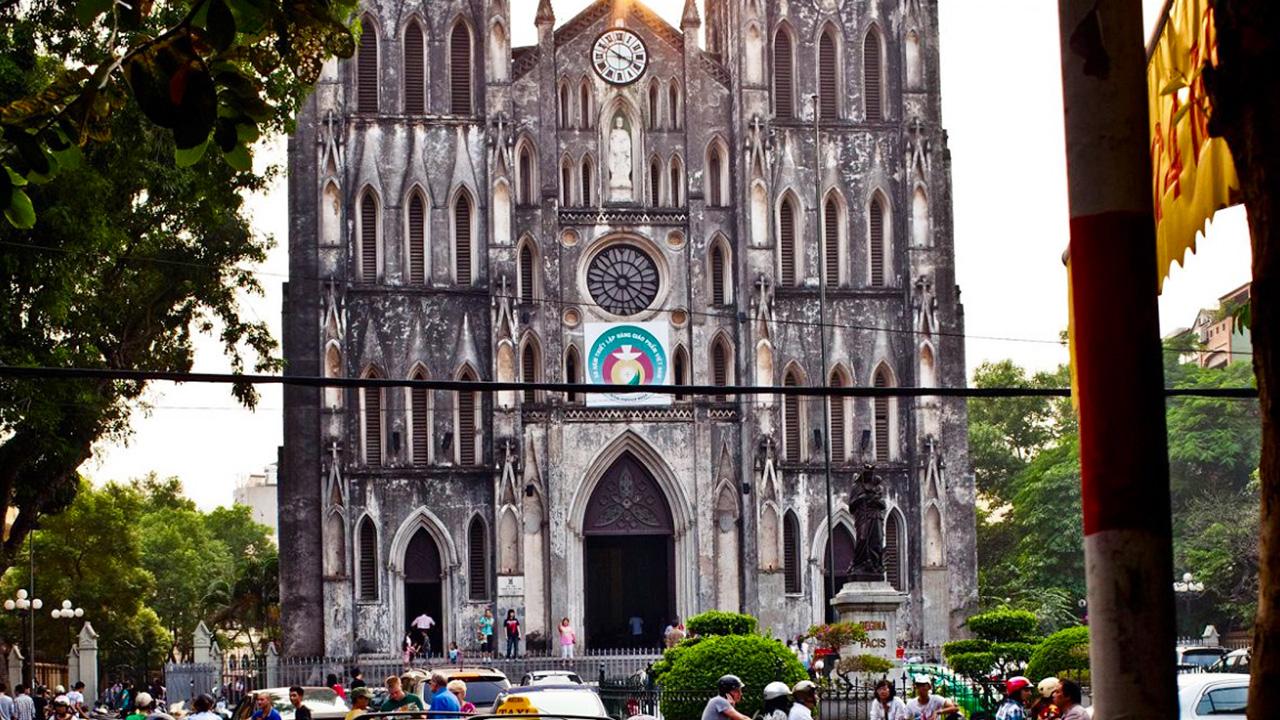
Neo-Gothic Design Elements
St. Joseph’s Cathedral exemplifies the Neo-Gothic architectural movement, with its features drawing air from the artistic elements that defined Gothic styles of the medieval period, wrapped in modern Gothic revival aesthetics. This grand church is characterized by its soaring spires and pointed arches that stretch heavenwards, creating a sense of divinity and ethereal reverence.
- Distinctive Features:
- Tall, looming spires that pierce the sky, a hallmark of Gothic Revival architecture.
- Ribbed vaults that confer both strength and visual complexity to the overall architectural blueprint.
- Aesthetic and Symbolic Role:
- Gargoyles and ornate statues adorn the facade, each seemingly with stories and symbolisms that reach back to medieval European churches.
- Stained glass windows, a quintessential Gothic feature, epitomize the craftsmanship of stained glass artisans of the period, creating an interplay of colored light that imbues the interior with spiritual warmth.
- Architectural Influence:
- Combining structural elements akin to the likes of major European cathedrals, fostering an atmosphere resonant of its Parisian predecessor, Notre Dame.
These architectural elements are not mere markers of style but intricately crafted reminders of an era where European colonization converged with indigenous styles, spreading not only architectural designs but also cultural narratives.
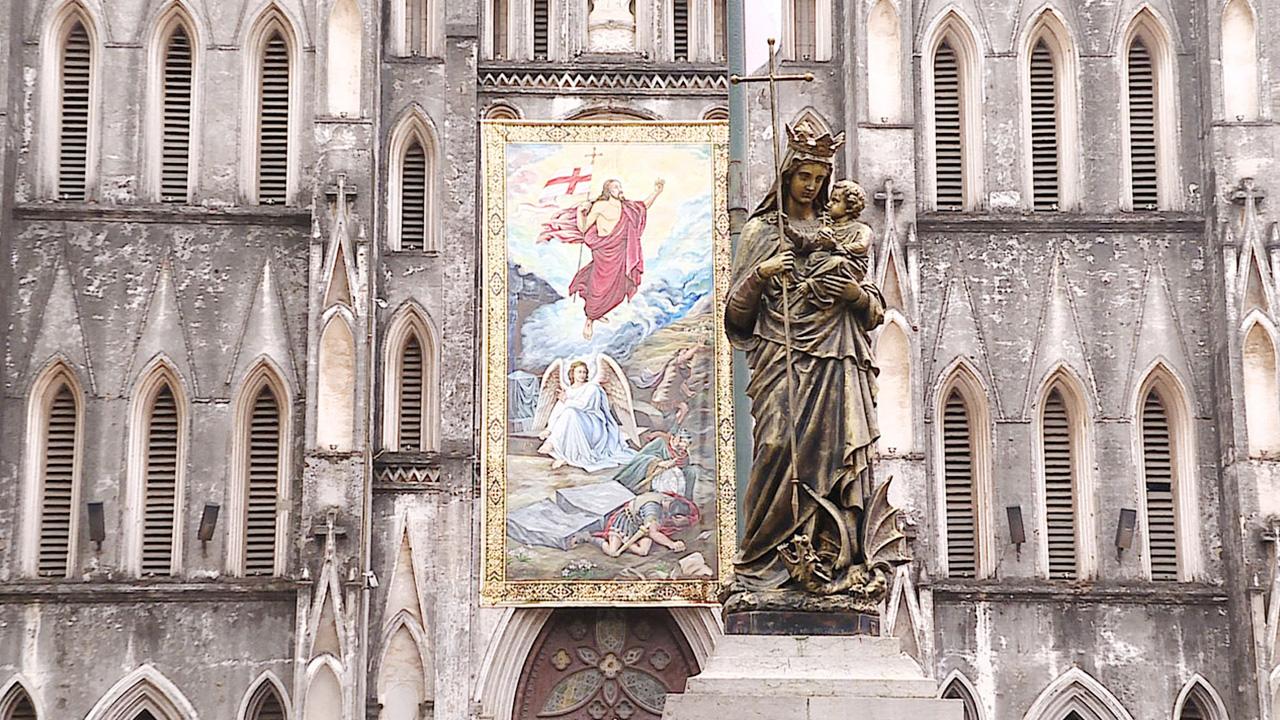
Unique Building Materials Used in Construction
The construction of St. Joseph’s Cathedral utilized an ingenious blend of traditional and modern materials, with due consideration to local availability and colonial design standards of the time. The juxtaposition of these materials has given the cathedral a distinctive appearance that has matured gracefully with Hanoi’s urban landscape.
- Local Materials:
- Baked clay bricks, often used in Vietnamese construction, form the primary material for the towering walls, blending endurance with aesthetic appeal.
- Teak and other hardwoods found within Vietnam’s forests were used extensively for the cathedral’s intricate wooden altars and pews.
- Imported Aspects:
- The stained glass windows were crafted and imported from France, casting luminous depictions of biblical scenes and saints, incomparable in their vibrancy and detail.
- Fine stonework embellishes many of the exterior and interior arches, selected for durability and finesse.
The fusion of these materials allows St. Joseph’s Cathedral to not only stand as a physical structure but also as a testament to the resourcefulness and cultural amalgamation during its time of inception.
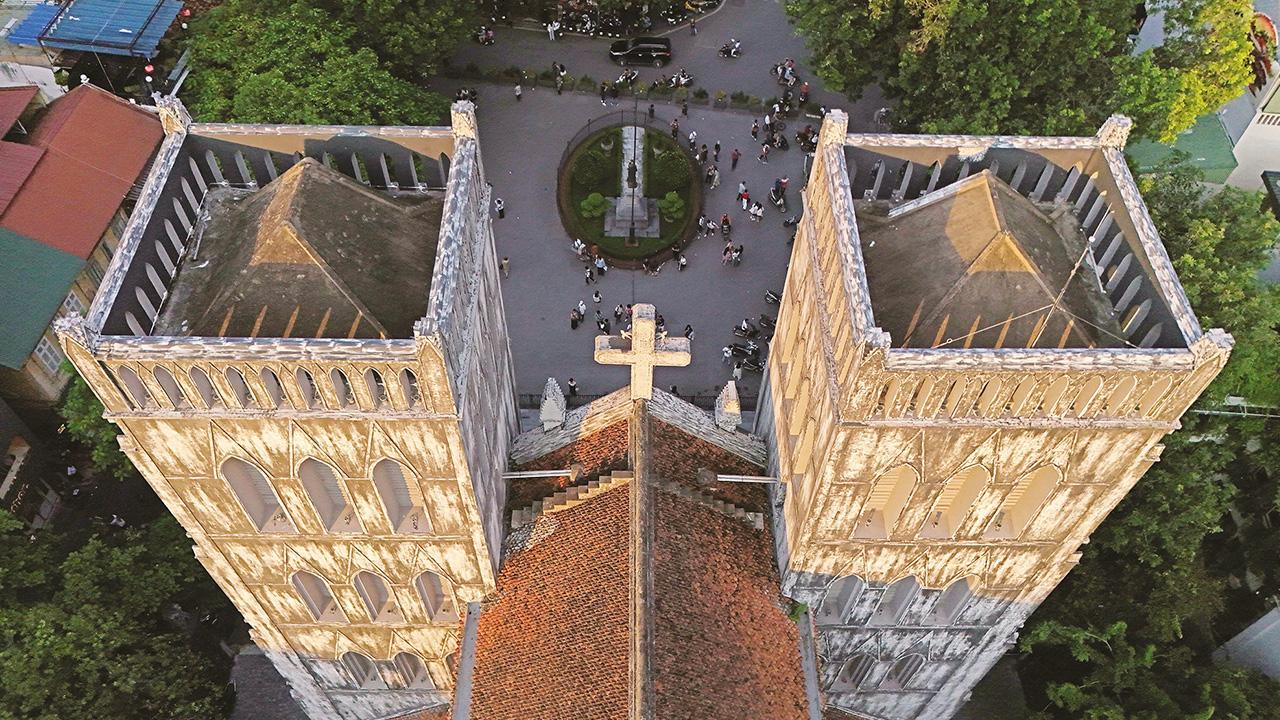
Notable Interior Features and Decorations
Upon stepping inside St. Joseph’s Cathedral, the visitor is enveloped in a realm where artistry meets spiritual devotion. The interior design further amplifies its Neo-Gothic identity, presenting a solemn elegance through its spatial organization and decorative intricacies.
- Key Interior Features:
- High vaulted ceilings supported by a series of ribbed arches, creating a vast, airy interior that encourages contemplation and awe.
- A grand altar punctuated with religious artifacts, showcasing not just Western artistic influences but also intricate Vietnamese craftsmanship.
- Decorative Elements:
- Several statues and sculptures, often gilded and deeply reflective, occupy the nave, featuring religious figures that are integral to Catholic traditions.
- Ornamental wood carving on pews and decorative panels, which echo the skill of Vietnamese artisans in effectively marrying Western religious motifs with local styles.
- Ambiance and Acoustics:
- The cathedral’s acoustics are tailored for sacred music, with echoes that amplify the solemnity of choral chants and the rich timbres of organ music, particularly during special services like Midnight Mass on Christmas Eve.
These features create an environment that not only serves the spiritual needs of its congregation but also impressively narrates the artistic and cultural collaboration it represents, making it a sanctuary of visual and spiritual fervor.
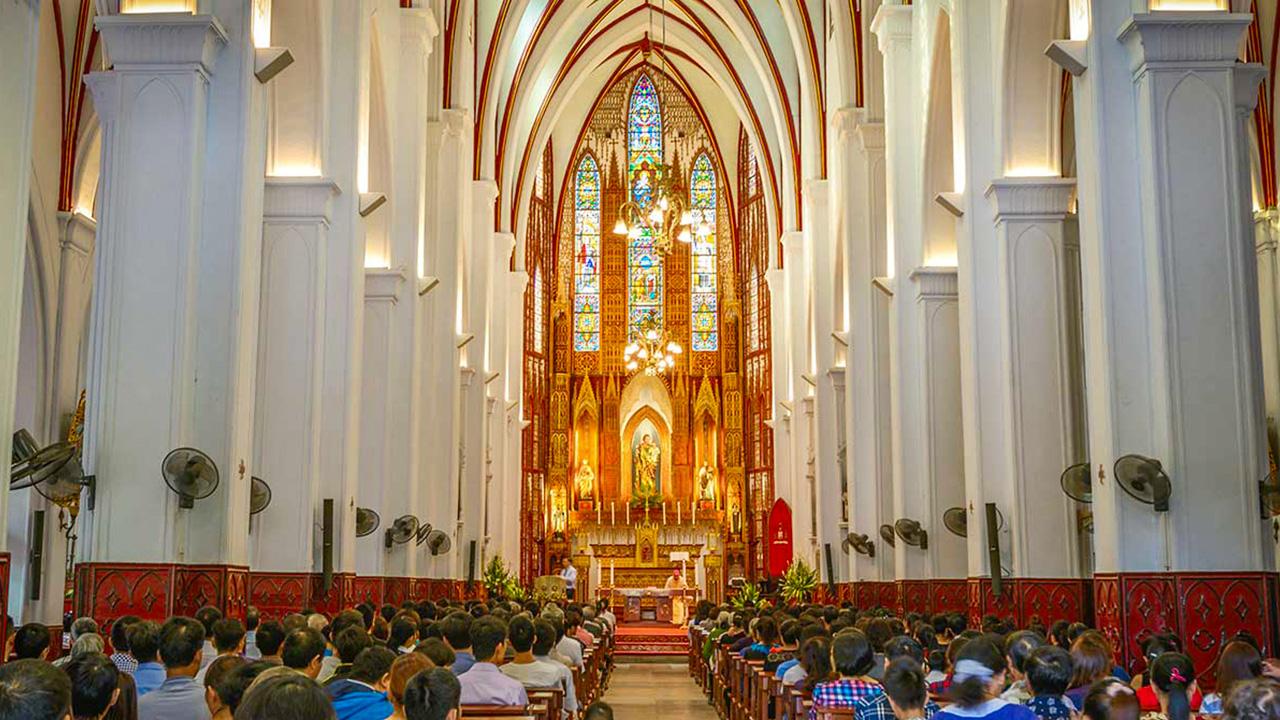
Visiting St. Joseph Cathedral
The architectural splendor and historical resonance of St. Joseph’s Cathedral make it a magnet for explorers and spiritual seekers. Located in the heart of Hanoi’s vibrant Old Quarter, the cathedral is easily accessible and offers intriguing insights into the city’s cultural past. Its captivating design and serene ambiance provide a respite for those keen to escape the bustling life outside its doors, while its surroundings offer opportunities to explore nearby attractions that weave into the fabric of Hanoi’s diverse heritage.
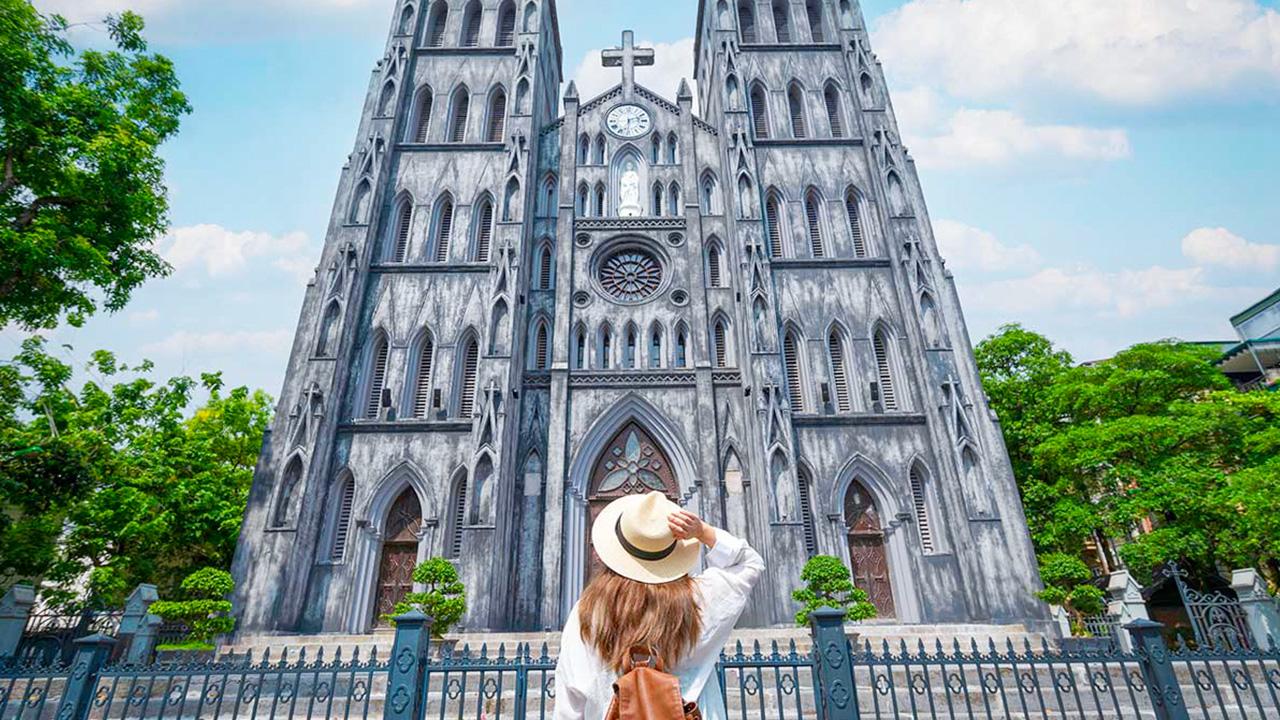
Best Times to Visit St. Joseph Cathedral
For those yearning to immerse themselves in the cathedral’s tranquil beauty, selecting the optimal time for visitation is essential. The cathedral holds a timeless appeal throughout the year, though seasons and specific timeframes highlight its allure quite differently.
- Ideal Seasons:
- Spring (March to May) and Fall (October to December) provide comfortable weather with mild temperatures, enhancing the experience exponentially.
- These periods also showcase the vibrancy surrounding the adjacent Hanoi Old Quarter, abuzz with cultural festivals and local gatherings.
- Preferred Visiting Hours:
- Early mornings and late afternoons are particularly enchanting, as light filters through the stained glass and casts kaleidoscopic hues upon the interior, enriching visual engagements.
- Avoiding midday, unless seeking the serene solace within, is advisable as the cathedral teems with tourists and worshippers bustling during peak hours.
Engaging with the cathedral during these times allows for a maximized experience, giving visitors the luxury of tranquil reflection amidst the congregation of historical narratives and modern-day faith practices.

Accessibility and Location Details
Positioned strategically in Hanoi’s Hoan Kiem district, St. Joseph’s Cathedral is effortlessly accessible, making it a favored spot among both locals and tourists. Proximity to Hanoi’s central attractions ensures that visitors can readily integrate a visit into a broader exploration of the city’s historical and cultural milieu.
- Location Specifics:
- Situated at 01 Nha Tho Street, less than a 5-minute walk from the serene Hoan Kiem Lake, offering a scenic route through the bustling Hanoi Old Quarter.
- Transport Options:
- Accessible via myriad transportation modes, including public buses (lines 9, 14, and 34 serve nearby stops), taxis, and cyclo-tours for a more authentic Vietnamese experience.
- Ease of Access:
- Walkable distance from several popular tourist locations, providing seamless visitation extending to other cultural landmarks.
Visitors can effortlessly plan a day filled with exploration, guiding themselves through the tapestry of Hanoi’s sights that unfold seamlessly from the threshold of this architectural marvel.

Nearby Attractions and Points of Interest
Nestled in a district brimming with historical charm and dynamic culture, St. Joseph’s Cathedral is an anchor point from which visitors can effortlessly discover notable sites that enrich the cultural journey through Hanoi.
- Cultural Landmarks:
- Hoa Lo Prison Museum: Approximately a 10-minute walk away, offering profound insights into Vietnam’s colonial and revolutionary history through evocative exhibitions.
- Hoan Kiem Lake: A bastion of tranquility surrounded by trees and the storied Ngoc Son Temple, merely a five-minute stroll from the cathedral.
- Shopping and Culinary Experiences:
- The bustling streets of the Hanoi Old Quarter offer an explosion of flavors and sights with alleyways lined with street food vendors, cafes, and artisan shops.
- The night markets of Hang Dao Street imbue vibrant energy into the night-time exploration of local crafts and souvenirs.
- Art and Photography:
- Galleries and studios pepper the area, reflecting Hanoi’s artistic scene, from traditional Vietnamese art to modern interpretations, perfect for capturing the essence of the city’s visual culture.
Explorers will discover a plethora of experiences outside the cathedral’s solemn grounds, blending the serene with the spirited, and weaving the historical with the contemporary.

Religious Practices and Community Involvement
Beyond its architectural grandeur, St. Joseph’s Cathedral is a spiritual heartland that pulses with a vibrant blend of religious devotion and civic engagement. It plays a pivotal role in the everyday life of Hanoi’s Catholics, hosting a spectrum of liturgical celebrations, cultural events, and community activities. These components not only serve the religious needs of its congregation but also foster a deep-rooted sense of community, weaving together faith, culture, and social responsibility.
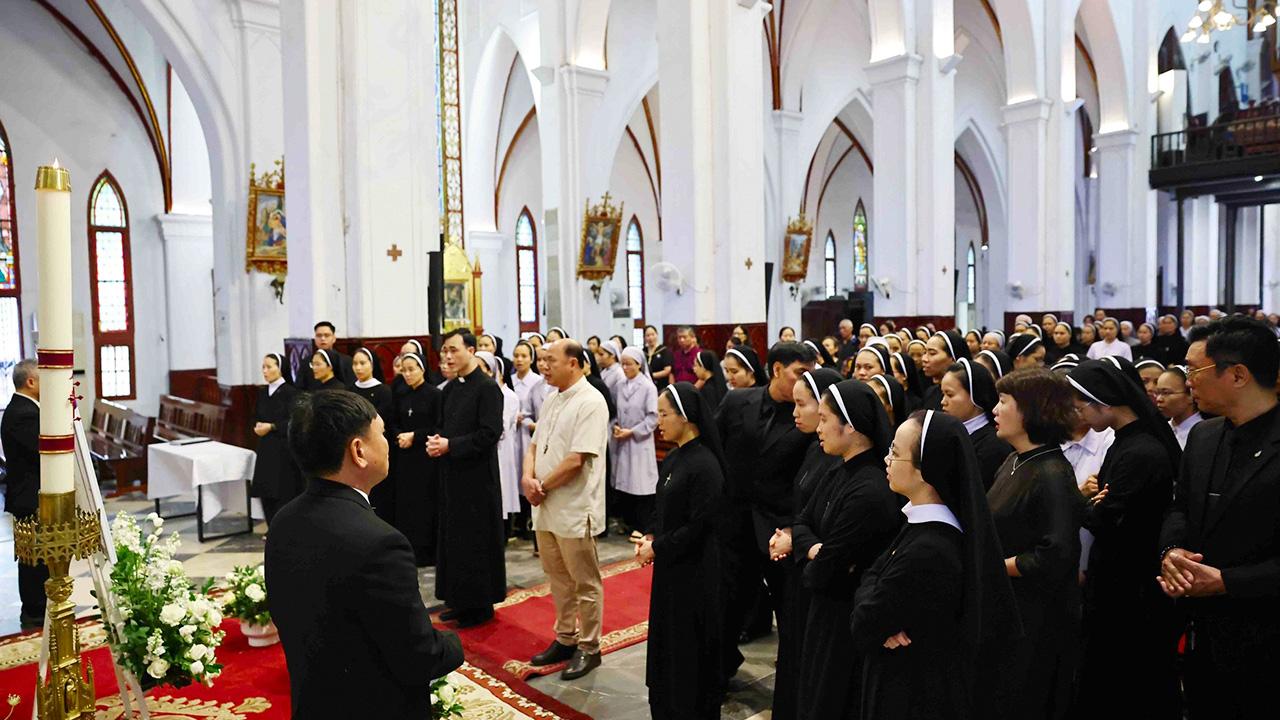
Mass Schedules and Religious Services at St. Joseph Cathedral
St. Joseph’s Cathedral is a bustling epicenter of religious activity, offering a comprehensive schedule of masses and services that cater to the diverse needs of its congregation.
- Weekly Schedule:
- Daily Masses: Held at 5:30 AM and 6:30 PM during weekdays, providing early and late options for parishioners.
- Saturday Vigil: A 5:30 PM Mass followed by an evening vigil at 6:00 PM caters to weekend attendees.
- Sunday Celebrations:
- A robust roster of masses throughout the day, beginning as early as 5:00 AM and stretching into the evenings at 8:00 PM, with services conducted in multiple languages, including English and Vietnamese.
- Special services cater to children, particularly the 4:00 PM Mass, designed to engage younger members of the parish community.
This extensive schedule underscores the cathedral’s commitment to meeting the spiritual needs of its diverse community, anchoring religious observance in the tapestry of everyday life.
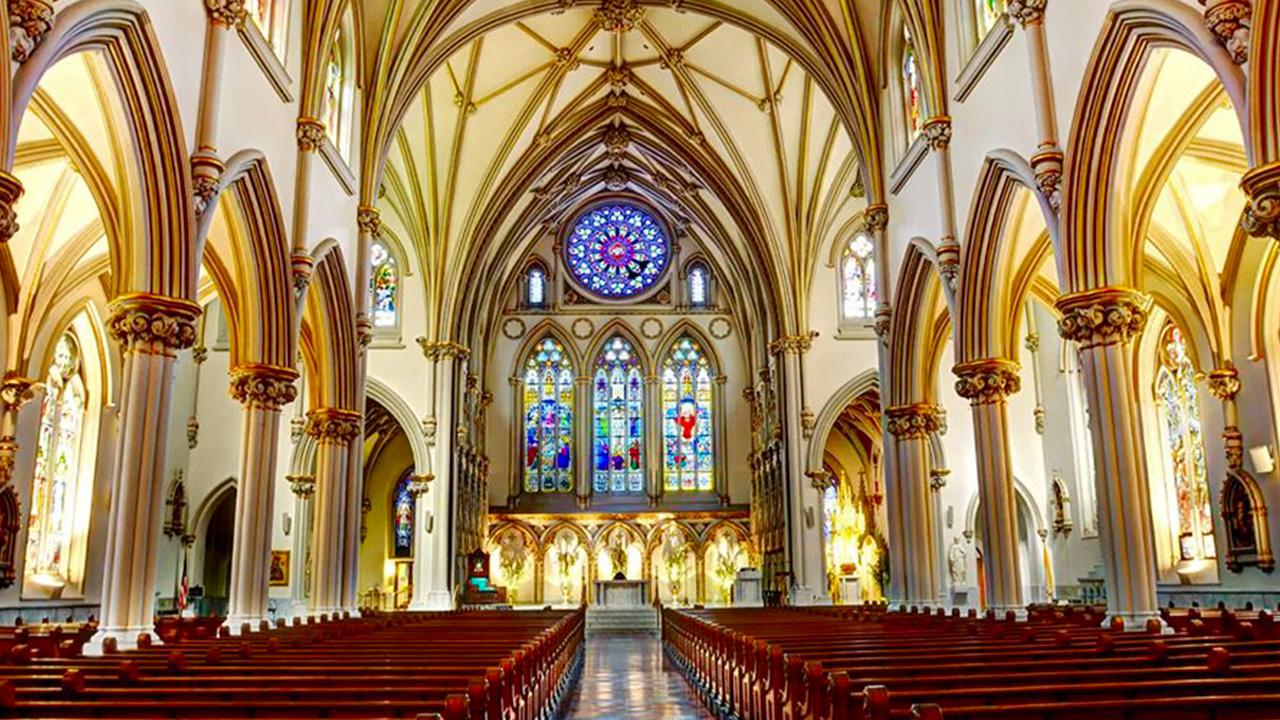
Role in the Local Catholic Community
Within Hanoi’s bustling milieu, St. Joseph’s Cathedral emerges as a linchpin of Catholic community life, fostering a profound sense of belonging and service among its followers. Its role extends far beyond religious observance, contributing to the social and cultural dynamics of the neighborhood.
- Community Engagement:
- The cathedral acts as a hub for community support initiatives, offering programs that range from charity drives to educational workshops that enrich parishioners’ spiritual and practical lives.
- It places emphasis on social justice and inclusivity, aligning with Catholic teachings to reach out particularly to marginalized groups.
- Interfaith Dialogue:
- Holds periodic events designed to foster understanding and cooperation among different religious and cultural groups, strengthening social cohesion.
- Cultural Integration:
- The cathedral is host to various cultural festivities, in tandem with religious events, that attract both Catholics and non-Catholics, thereby bridging communal divides.
These roles reinforce the cathedral’s position as both a spiritual haven and a social cornerstone, creating ripples of positive impact that reach far beyond its gates.
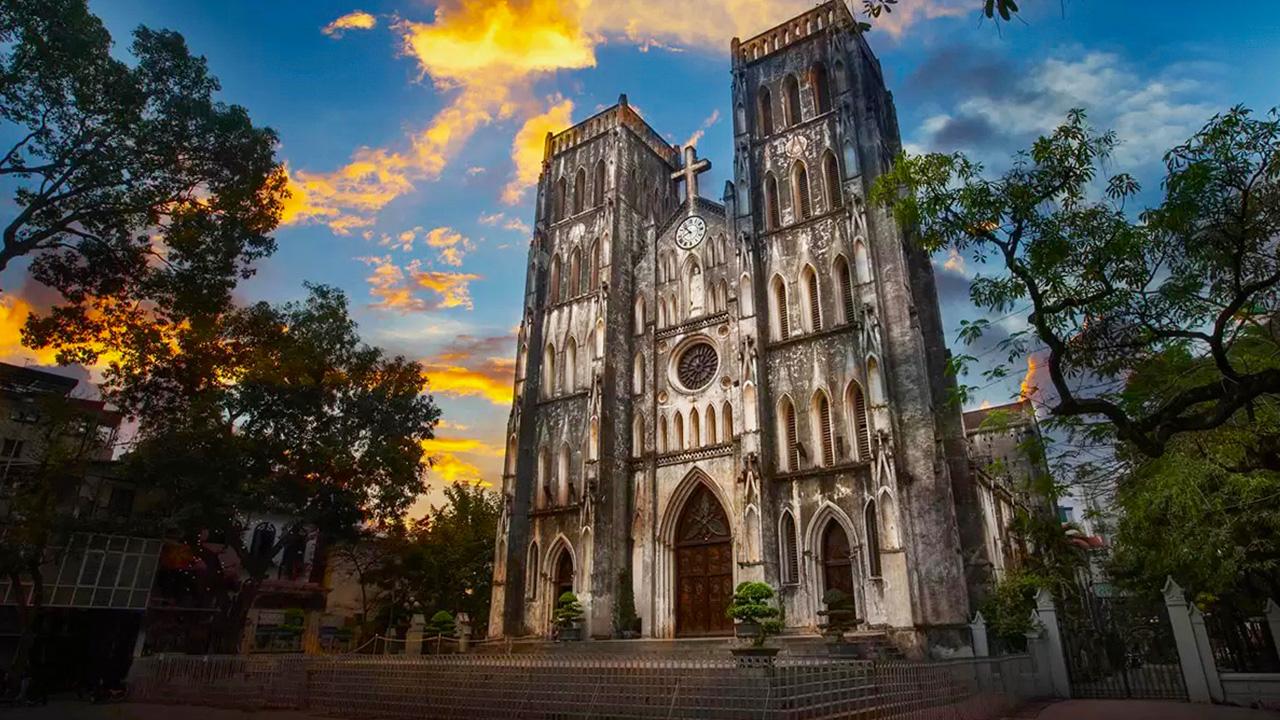
Cultural Events and Celebrations Held at the Cathedral
St. Joseph’s Cathedral is not just a sacred space for worship but also a vibrant venue for cultural and religious festivities, which draw both the faithful and the curious alike.
- Major Festivals:
- The cathedral hosts grand Christmas and Easter celebrations, with liturgies that attract thousands and are accompanied by vibrant choirs, narrative reenactments, and community feasts.
- Annual Feast Days:
- March 19th, marked by a special mass and events to celebrate St. Joseph’s Feast Day, an occasion of particular significance.
- Cultural Intersections:
- Incorporating traditional Vietnamese culture into its celebrations, such as lion dances and Tet activities that symbolize the fusion of faith with local customs, capturing the essence of cultural synthesis.
- Community Outreach:
- Throughout the year, various outreach programs are held, highlighting the cathedral’s engagement with the wider community, furthering its mission to serve as a pillar of support.
These events encapsulate the harmonious blend of faith and culture, establishing the cathedral as a dynamic center that nurtures a rich tapestry of tradition and spirituality.
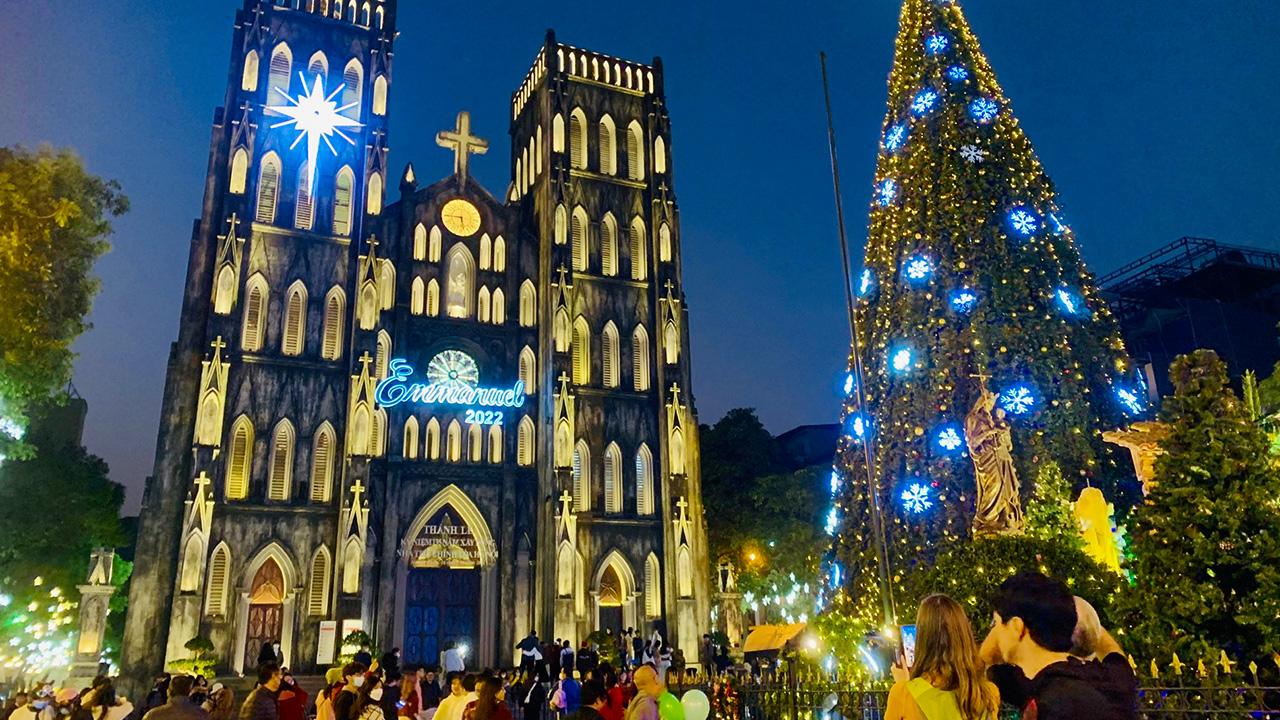
Comparison with Other Cathedrals in Vietnam
In the diverse landscape of Vietnam’s spiritual architecture, St. Joseph’s Cathedral holds a distinct position among other famed cathedrals, most notably Notre-Dame in Ho Chi Minh City. Each of these sacred edifices bears unique architectural traits and historical narratives that speak volumes about the country’s colonial past and its evolution. A comparative exploration reveals nuances in their design, cultural significance, and the communities they serve, highlighting the multifaceted nature of Catholic heritage across Vietnam.
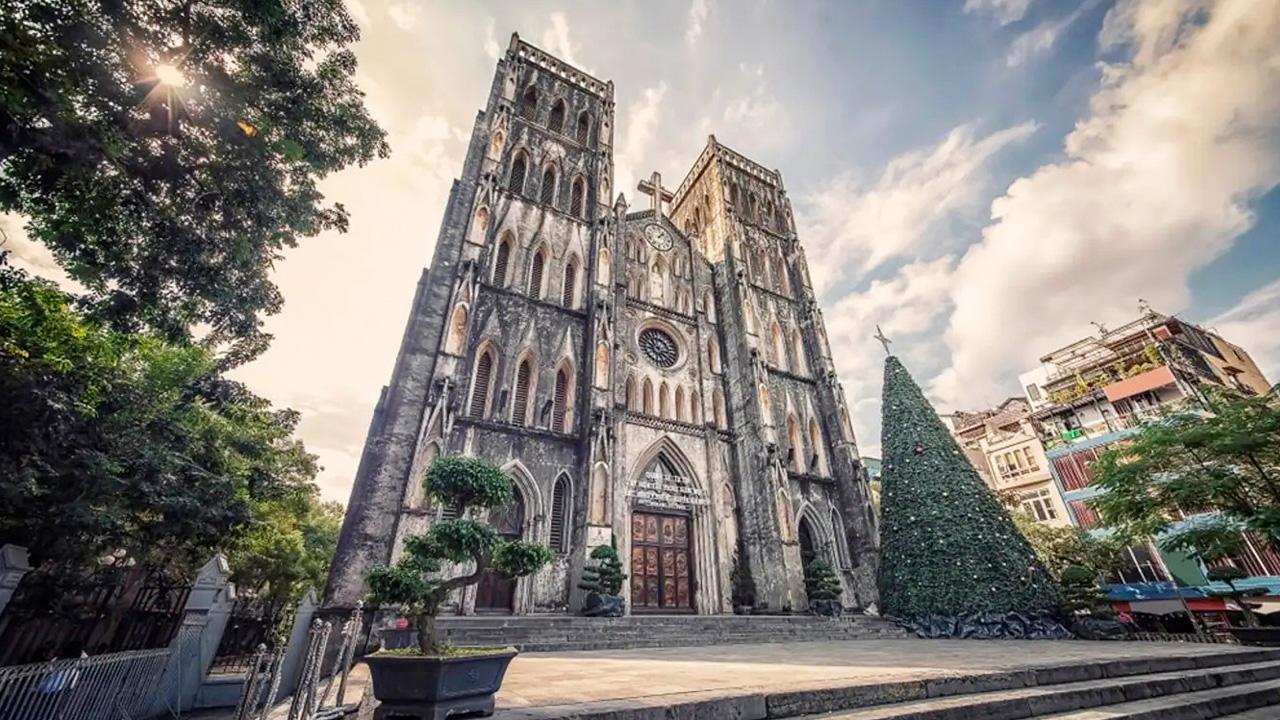
Comparison with Notre-Dame Cathedral in Ho Chi Minh City
The juxtaposition of St. Joseph’s Cathedral with Notre-Dame Cathedral Basilica of Saigon elucidates a tale of two cities under colonial rule, each with its distinct architectural grace. Both cathedrals play significant roles in illustrating Vietnam’s urban and cultural narratives but diverge in style and context.
- Architectural Details:
- Notre-Dame exhibits Romanesque architecture with clear French influences, primarily seen in its red-bricked facade and extensive use of imported materials, including the bricks and stained-glass windows from France.
- St. Joseph’s resonates with Neo-Gothic aesthetics, featuring pointed arches and intricate stonework, representative of the Gothic revival period.
- Structural Comparisons:
- The 58-meter tall bell towers of Notre-Dame Cathedral contrast with the more modest 31.5-meter spires of St. Joseph’s, stressing different aspects of architectural grandeur.
- Cultural and Liturgical Role:
- While both serve as headquarters for Catholic services in their respective cities, their cultural imbrication varies significantly, with each holding exclusive ceremonial practices like Easter parades in Hanoi.
These differences highlight the multicultural dialogues in architectural forms and cultural expressions that were prompted by colonial interactions, featuring a blend of native traditions and imported practices.
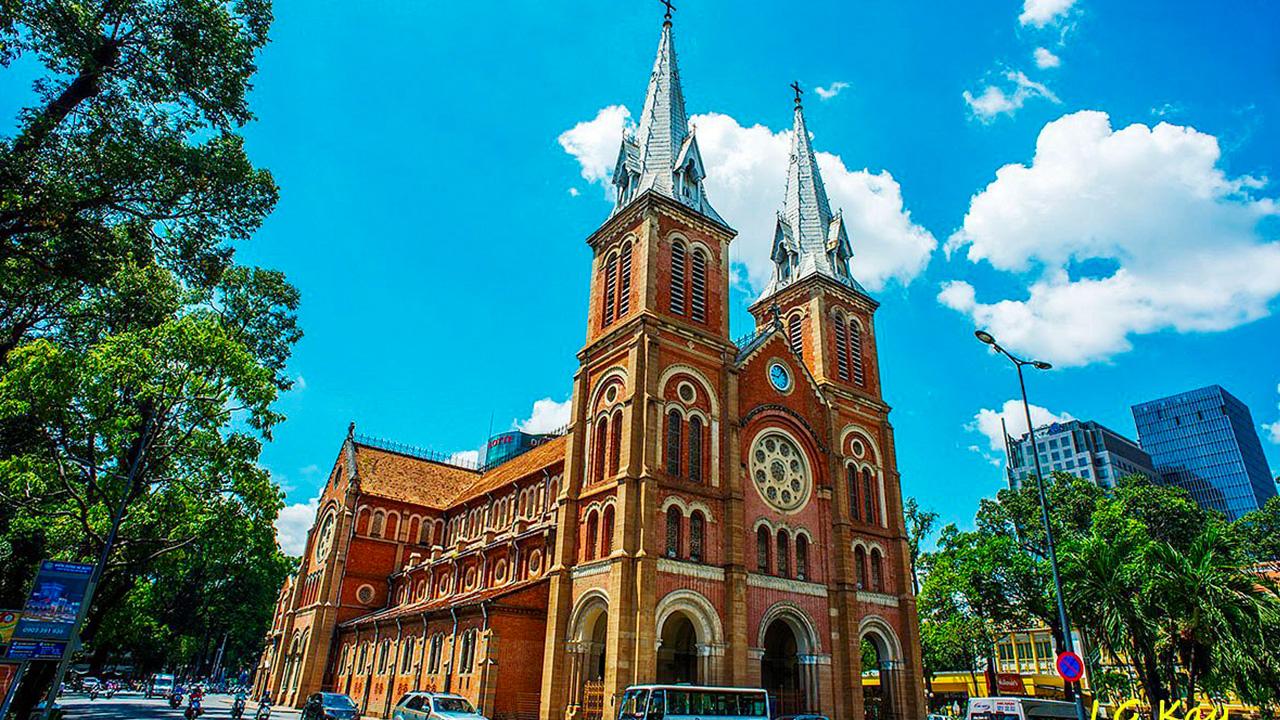
Unique Aspects Compared to Other Religious Structures in Hanoi
St. Joseph’s Cathedral stands out as a singular presence among Hanoi’s religious structures, known for its unique combination of Western and Vietnamese elements a Gothic edifice among traditional temples and pagodas.
- Architectural Fusion:
- This cathedral is a confluence of Gothic aesthetics with colonial history and local elements, different from the indigenous architectural stylings like the red-lacquered wood beams and curved roofs seen in traditional Vietnamese temples.
- Its Western-style layout, characterized by nave and transept, contrasts with the enclosed sanctuaries and open courtyards typifying Asian spiritual architectures.
- Cultural Histories:
- While pagodas and traditional religious temples often reflect Buddhist influence entwined within Vietnamese religious culture, St. Joseph’s serves as a testament to Christianity’s complex introduction and adaptation in the region.
- Intercultural Appeal:
- Its location in the Hanoi Old Quarter situates it amidst a tapestry of cultural interactions, attracting both the devout and the historically curious, unlike more isolated temples.
This diversity in design and cultural impression encapsulates Hanoi’s broader historical narrative, where multicultural influences merge with indigenous religions to create a rich urban tapestry.
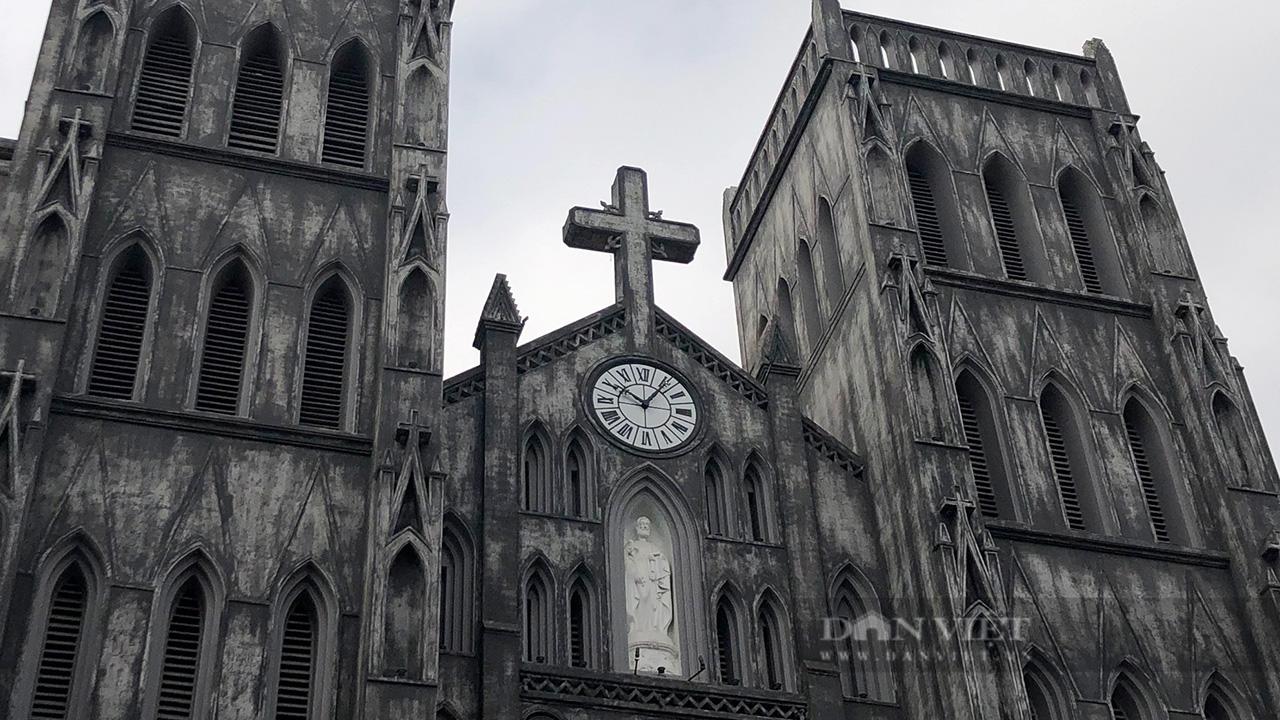
Visitor Experiences: St. Joseph Cathedral vs. Other Major Cathedrals
When visiting cathedrals across Vietnam, travelers often find that each place offers a distinct tapestry of experiences, with St. Joseph’s Cathedral being no exception, often remembered fondly for its balanced blend of community interaction and aesthetic allure.
- Atmosphere and Accessibility:
- St. Joseph’s is lauded for its serene ambiance amidst the hustle and bustle of the Old Quarter, providing a quiet respite for reflection and spiritual renewal.
- The accessibility of the cathedral offers seamless integration into a traveler’s itinerary, contrasting with more isolated or secluded monastic sites.
- Community Interaction:
- Visitors frequently recount:
- Engaging with local cultural events or participating in charity walks organized by the cathedral.
- Experiencing rich communal interactions not always observed in visitor reports from larger-scale cathedrals like Notre-Dame in Saigon.
- Visitors frequently recount:
- Architectural Appreciation:
- The stunning architectural nuances like the stained-glass narratives and acoustics are often praised for their ability to transform daily services into a multisensory affair, differently appreciated from the broader Romanesque stylings of Notre-Dame and likened more to a spiritual narrative of cultural survival.
These varied experiences underscore St. Joseph’s as an integral part of the community, with a receptive heart to travelers seeking both religious and historical insights in their journey through Vietnam.
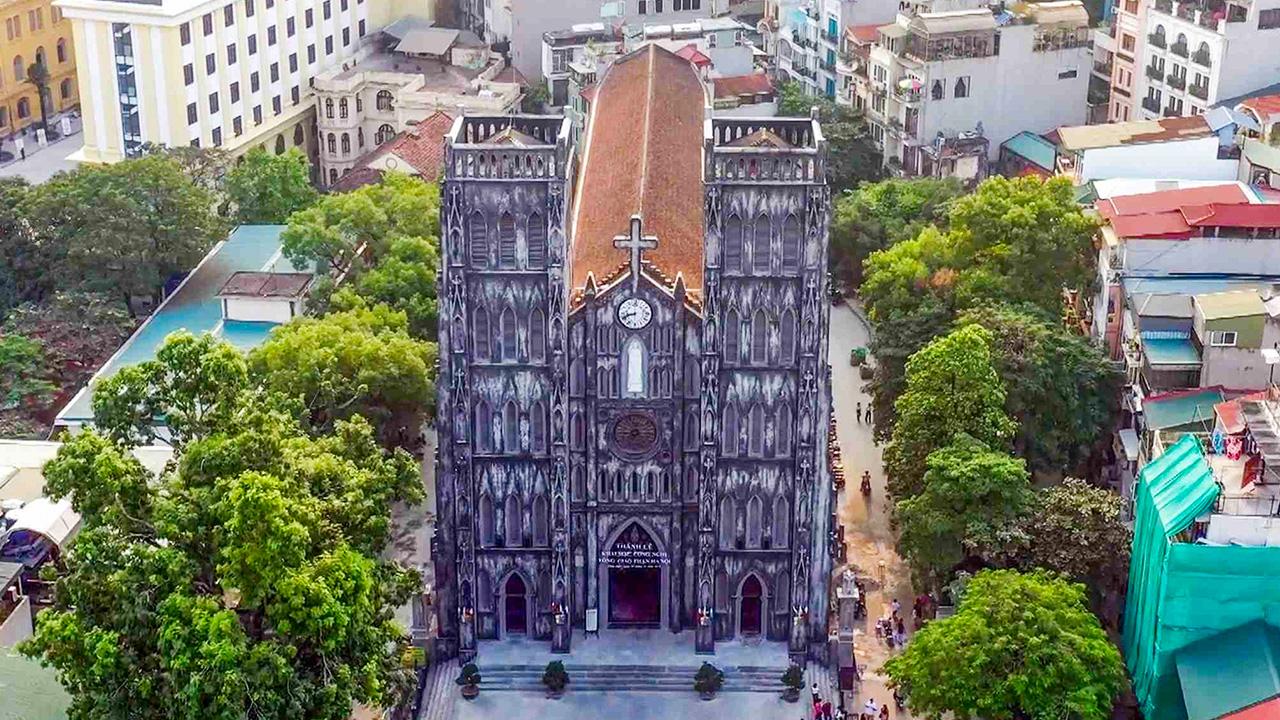
Preservation Efforts and Challenges
Understanding St. Joseph’s Cathedral’s role within the broader landscape of Vietnam’s spiritual architecture also means acknowledging the ongoing efforts to preserve its historical integrity. These endeavors underline the challenges faced by heritage sites immersed in dynamic urban landscapes. As development in Hanoi expands, balancing modernization with the cathedral’s cultural preservation presents both opportunities for adaptation and potential threats to its integrity. The commitment to maintaining this vital link between past and present serves as a testament to the value placed on cultural heritage in contemporary society.
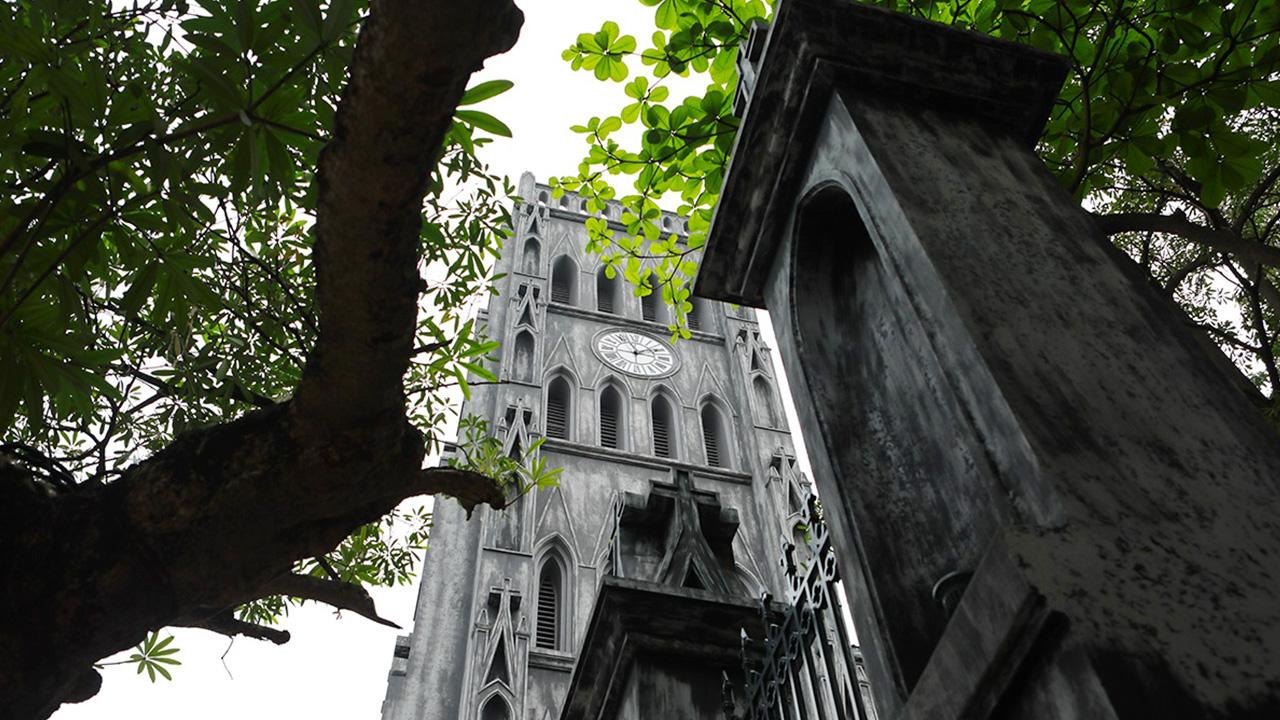
Ongoing Maintenance and Restoration Projects
Ensuring that St. Joseph’s Cathedral remains an enduring symbol of architectural splendor involves concerted maintenance and restoration efforts. These projects are integral to the preservation of the cathedral’s aesthetic and historical essence, necessitating careful planning and execution.
- Restoration Undertakings:
- Recent initiatives have focused on reinforcing key structural components to address the wear inflicted by time and environmental factors, employing both traditional methods and modern technologies for conservation.
- Stonework cleaning and refurbishment projects have been critical, restoring the exterior vibrancy while ensuring that historical integrity is maintained.
- Funding and Collaboration:
- Preservation efforts are often supported by a combination of church funds, local government grants, and international aid, reflecting a collaborative approach to heritage conservation.
- Community Partnerships:
- Local artisans frequently participate in restoration work, leveraging traditional skills passed down generations, furthering the cultural dialogue that the cathedral represents.
These endeavors aim not just to maintain the cathedral’s physical structure but also to preserve its status as a cultural beacon in Hanoi’s rapidly changing urban environment.
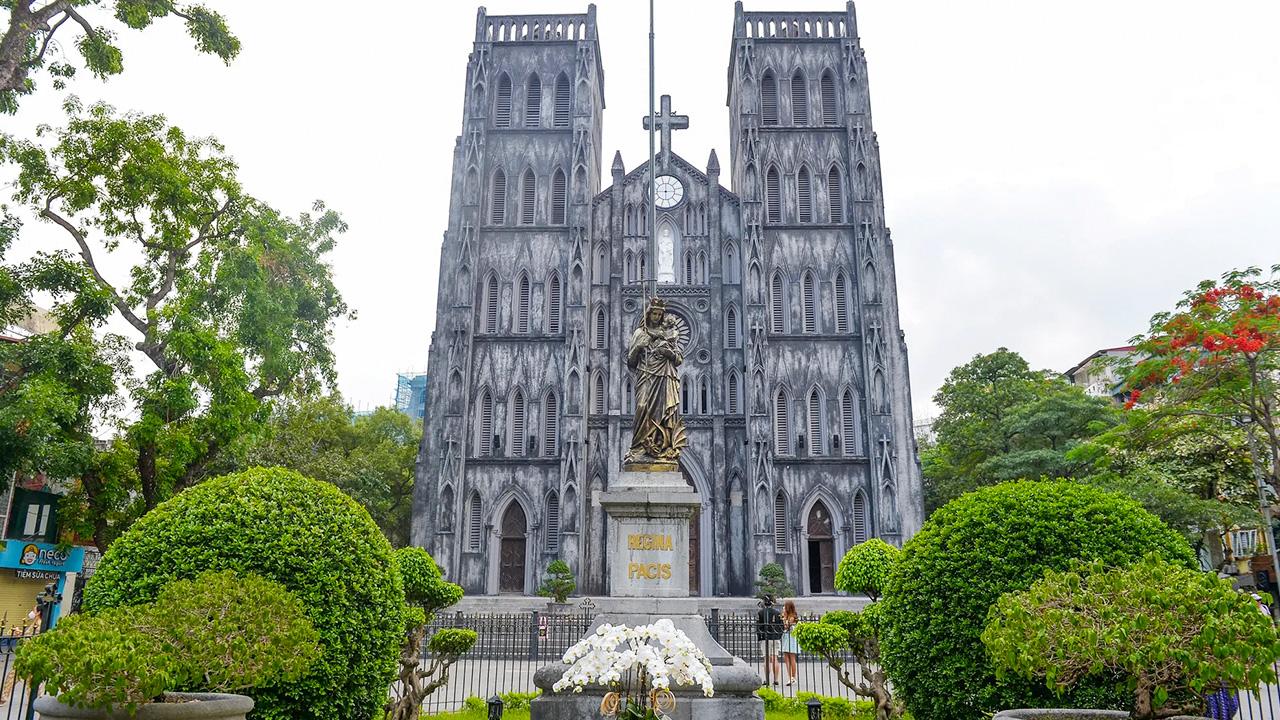
Impact of Urban Development on the Cathedral’s Heritage
As Hanoi’s urban landscape transforms, St. Joseph’s Cathedral is confronted with challenges that test its continued cultural relevancy and historical preservation amidst increasing urbanization.
- Development Pressures:
- The rapid expansion in Hanoi poses risks to traditional structures, as modern skyscrapers encroach upon the city’s historic skyline, altering vistas once dominated by the cathedral’s towers.
- Zoning and Regulatory Concerns:
- Balancing preservation with urban growth has necessitated zoning regulations aimed at protecting heritage sites, though enforcement and public support fluctuate.
- Cultural Renaissance or Loss?
- Some advocate for integrating modern structures within historical areas to reflect a dynamic cultural exchange, while others fear these changes might diminish the cathedral’s cultural prominence.
Ultimately, St. Joseph’s Cathedral remains a resilient figure within Hanoi’s evolving narrative, continually adapting to societal shifts while standing firm as a testament to cultural heritage.
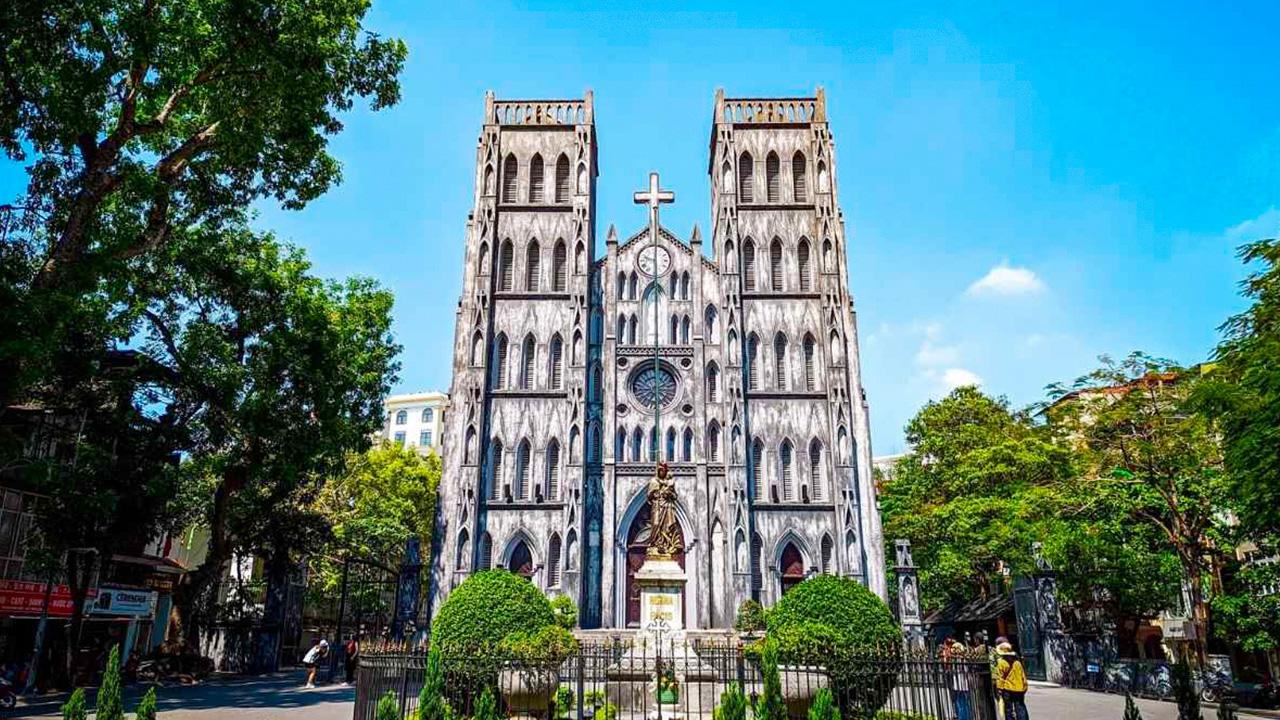
Community Support for Preservation Initiatives
The sustained preservation of St. Joseph’s Cathedral is dependent upon widespread community involvement and support, emphasizing the collective responsibility of safeguarding this cultural monument.
- Public Engagement:
- Educational programs designed to raise awareness of the cathedral’s historical significance have been instrumental in garnering public interest and support.
- Community-led efforts, such as volunteer groups participating in maintenance activities, exemplify grassroots involvement in preservation.
- Government and NGO Partnerships:
- Collaborations between heritage organizations, NGOs, and government entities provide structural frameworks and resources to bolster preservation efforts, ensuring that the cathedral remains a central figure in Hanoi’s cultural tapestry.
- Generational Influence:
- Engaging younger generations through educational outreach programs helps instill a sense of ownership and responsibility towards historical preservation.
The cathedral, seen as a repository of collective identity and heritage, benefits significantly when local communities actively engage in its preservation, ensuring its ongoing legacy.
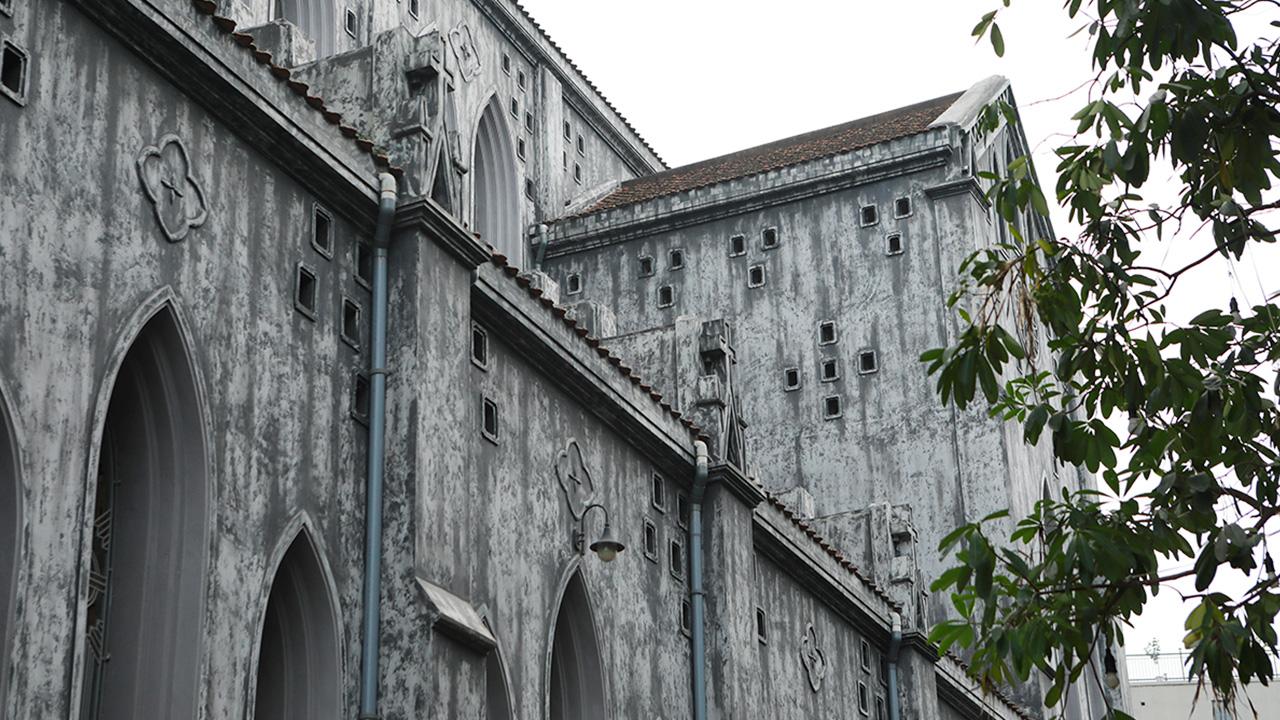
Significance in Hanoi’s Cultural Landscape
St. Joseph’s Cathedral is more than an architectural marvel; it is a living testament to the intercultural narratives that shape Hanoi’s identity. Within the framework of preservation efforts, its role extends into domains of historical education and cultural tourism, cementing its place as a cornerstone of Hanoi’s cultural and historical landscape. As a catalyst for urban dialogue, the cathedral continues to inspire architectural innovation and artistic expression, reinforcing the symbiotic relationship between the past and present.
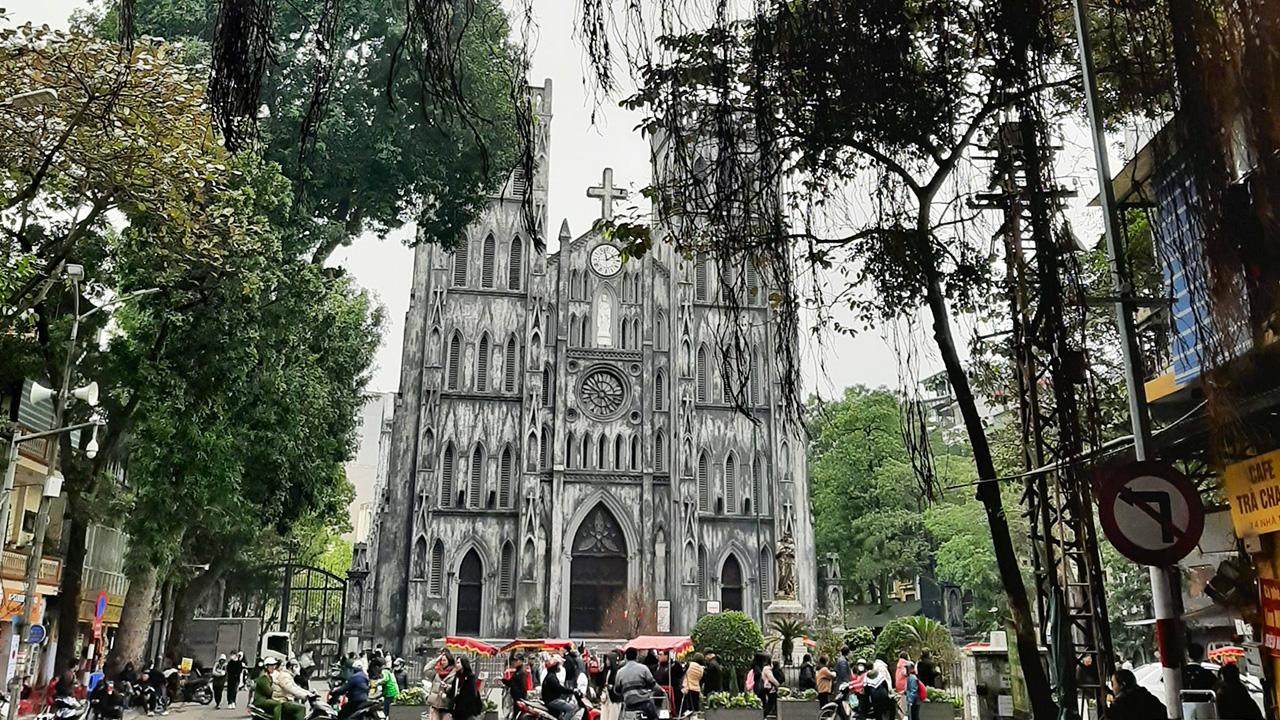
Role as a Tourist Attraction
As one of Hanoi’s most visited landmarks, St. Joseph’s Cathedral serves as a significant draw for local and international tourists, captivating visitors with its historic resonance and architectural allure.
- Tourism Appeal:
- The cathedral’s prominent position within Hanoi’s Old Quarter makes it an essential stop on most sightseeing tours, noted for its striking façade and rich history.
- Guided tours often highlight its historical significance, inviting tourists to delve deeper into its storied past.
- Cultural Exchange:
- Tourists engage with local practices and customs during their visit, often observing or even participating in services and cultural events hosted by the cathedral.
- Educational Impact:
- The educational programs and informational plaques placed around the site provide deeper insights into the cultural heritage and architectural intricacies that define the cathedral.
By offering a space where history and contemporary culture intersect, St. Joseph’s reaffirm its importance as a beacon of Hanoi’s diverse historical narrative.

Influence on Local Architecture and Urban Design
As a foundational piece of Hanoi’s architectural heritage, St. Joseph’s Cathedral continues to leave an indelible impact on both local architecture and urban development trends.
- Architectural Signature:
- Its Gothic design elements have inspired subsequent urban planning initiatives to incorporate harmonious blends of modernity with traditional architectural motifs.
- Spiritual and Cultural Anchor:
- The cathedral’s integration within the Old Quarter serves as a spatial and cultural reference point for the city’s development, influencing residential and commercial planning aimed at preserving historical character.
- Vision for Future Development:
- Discussions around sustainable urbanization frequently cite St. Joseph’s, emphasizing the importance of preserving historical sites amidst rapid urban change.
The cathedral thus remains integral to Hanoi’s urban narrative, influencing modern architecture while preserving cultural memory lanes.

St. Joseph Cathedral in Arts and Literature
The cultural impact of St. Joseph’s Cathedral extends beyond its brick and mortar, permeating the arts and literature that capture the spirit of Hanoi across time.
- Artistic Depictions:
- The cathedral frequently features in photographic showcases, exhibitions, and contemporary artworks, emphasizing its enduring visual appeal.
- Paintings and sketches capture its intricate Gothic elements, reflecting both its architectural grandeur and spiritual ambiance.
- Literary Inspirations:
- Writers and poets draw upon the cathedral’s historical journey as a backdrop for narratives that explore themes of colonial history, spiritual resilience, and cultural unity.
- Cultural Reflections:
- Artistic and literary representations of the cathedral highlight how its existence is emblematic of broader cultural intersections, bridging past and present Vietnamese identity as seen through the eyes of creative interpreters.
In the realm of arts and literature, St. Joseph’s Cathedral serves as a muse, its enduring presence narrating the historical and cultural richness of Vietnam to the wider world.
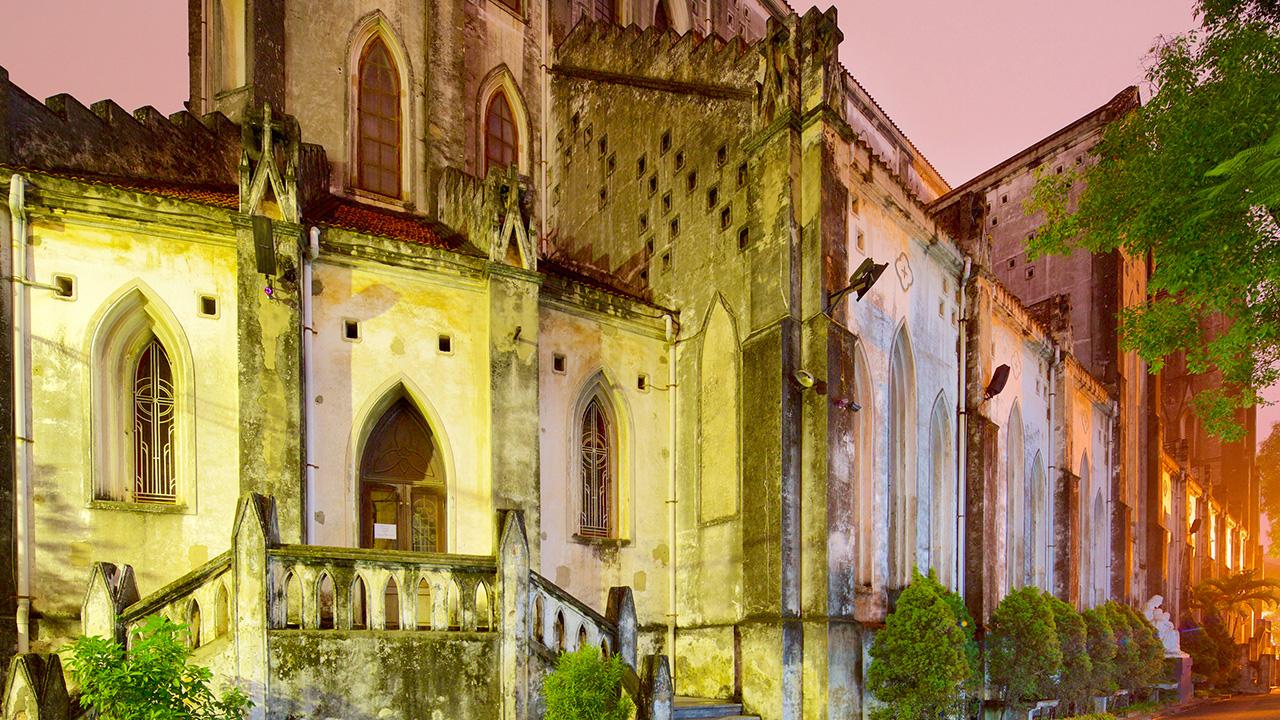
Key Takeaways
- St. Joseph’s Cathedral stands as a testament to the fusion of French Gothic architecture with Vietnamese cultural elements.
- It plays a dynamic role in the local Catholic community, providing religious services and facilitating cultural celebrations.
- The cathedral faces ongoing preservation challenges amidst urban development.
- As a vital part of Hanoi’s cultural landscape, it influences local architecture and serves as a significant tourist attraction.
- St. Joseph’s continues to inspire art and literature, symbolizing resilience and cultural unity.
Frequently Asked Questions (FAQs)
- What is the architectural style of St. Joseph’s Cathedral in Hanoi?
- St. Joseph’s Cathedral showcases Neo-Gothic architecture, influenced heavily by the Gothic Revival movement popularized in France during the colonial era.
- When is the best time to visit St. Joseph’s Cathedral in Hanoi?
- The ideal times are during the cooler months of spring (March to May) and fall (October to December) for mild weather and vibrant local festivities.
- How does St. Joseph’s Cathedral impact the local community in Hanoi?
- It serves as both a religious center providing regular Mass services and a cultural hub hosting community events, fostering spiritual and social bonds.
- What preservation efforts are in place for St. Joseph’s Cathedral?
- Ongoing maintenance includes structural restorations funded by government grants and community initiatives to preserve its historical and cultural significance.
- Is St. Joseph’s Cathedral easily accessible to tourists?
- Yes, located in Hanoi’s Old Quarter, it is easily accessible via various public transport modes and is a short walk from central attractions like Hoan Kiem Lake.
Conclusion
In the heart of Hanoi, St. Joseph’s Cathedral stands as a silent witness to the city’s vibrant history, offering an indelible link to a narrative forged in both challenge and triumph. Its Gothic arches and sacred spires reach skyward, much as they first did in the late 19th century, carrying with them the collective aspirations and enduring faith of a community intertwined with history. As an emblem of cultural convergence and architectural elegance, the cathedral speaks to the harmonious union of East and West, offering a rich tapestry of stories to visitors and locals alike.
With its ongoing preservation leading the charge against modern encroachments, St. Joseph’s continues to inspire awe and reverence, ensuring that its legacy as a cornerstone of spiritual, cultural, and historical significance remains an integral part of Hanoi’s vibrant identity. Through the lens of art and architecture, community and celebration, it unwaveringly holds its post as a testament to Hanoi’s resilient spirit, standing proudly at the intersection of time where history, faith, and culture converge.


